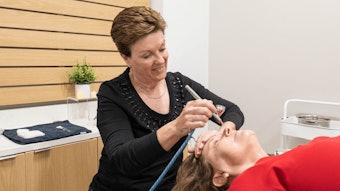
We’re all keenly aware that stress levels are on the rise. As society’s technological advances and capabilities improve, our stress levels are climbing right alongside. In 2024, the American Psychiatric Association found that forty-three percent of adults reported feeling more anxious than they did in 2023.
This article is only available to registered users.
Log In to View the Full Article
We’re all keenly aware that stress levels are on the rise. As society’s technological advances and capabilities improve, our stress levels are climbing right alongside. In 2024, the American Psychiatric Association found that forty-three percent of adults reported feeling more anxious than they did in 2023.
The American Institute of Stress defines stress as the body’s nonspecific response to any demand, whether it is pleasant or unpleasant. While stress can come and go based on external factors, it can have both short-term and long-term effects. Some of the short-term physical symptoms of stress include fatigue, headaches, muscle tension, upset stomach, insomnia and an elevated heart rate. Emotional symptoms of stress include overwhelm, lack of focus, irritability and frustration. High levels of stress over time can cause challenges with depression, weight gain, anxiety, gastrointestinal disorders and heart disease.
De-Stress Yourself and Help Your Clients
As spa and wellness professionals, providing ideal results and outcomes for your clients also includes supporting them in using successful self-care tools. Learning how to take care of yourself in stressful moments is a practice that can certainly help your clients as well. I believe as caring professionals, we’re also being called to always pay forward the self-care techniques that work for us.
As skin, spa and wellness professionals, we’re often seeing stress firsthand as it shows up on the skin, in the body and also emotionally. While we know that it’s not always possible to prevent stress, it is indeed possible to shift stress before it takes over to cause long-term issues. This is where deep breathing comes in to offer a solution.
Deep breathing is vital for oxygenating our cells, purifying our lungs and releasing stale stagnant air, but there are so many other benefits that help reduce stress. Deep breathing creates an overall relaxation response which includes regulating the nervous system, reducing lactic acid buildup, lowering blood pressure and heart rate, as well as reducing stress hormones in the blood.
Conscious Deep Breathing
The body, of course, is naturally breathing itself without your conscious input, but once you apply conscious intent and conscious direction to the breath, you can tap into the greater de-stressing benefits. Have you heard the phrase, “Where awareness goes, energy flows?” Well, the mind is a powerful ally! You can enlist the mind by redirecting its focus to your breath to reap the de-stressing potential of deep breathing. Conscious deep breathing is a highly valued stress reduction tool that can help provide a mindset shift and help stop stress before it even starts.
Conscious Deep Breathing Practices to Explore:
1. Box Breathing: Inhale through the nose for four counts; consciously hold the breath for four counts; exhale softly out the mouth for four counts and again, consciously hold the breath for four counts. Repeat all. Recommended for nervous system regulation.
2. Pursed Lips Breathing: Inhale through nose; purse lips as if sipping through a straw; exhale softly out mouth through your pursed lips. Recommended to reduce anxiety.
3. Deep Cleansing Breath: Inhale through nose; exhale out mouth for as long as you can with sound. Repeat. Recommended for releasing emotional tension and inviting a feeling of purification.
4. Soothing Breath: Inhale and exhale through mouth with a soothing “ha” sound. Repeat. Recommended for mental and emotional tension.
5. Focus Breathing: Choose one focus: either the sound, texture, rhythm or location of the breath; inhale and exhale through the nose and focus on only one at a time: either listening to the sound, feeling the texture, counting the breath in whatever rhythm you choose or focusing on where you feel your breath in your body. Repeat. Recommended to redirect the mind’s focus.
6. Affirmation Breathing: Breathing with a single thought. Examples: “I am peaceful,”; “I am healing,”; “I am gentle toward myself.” Recommended to soothe the rough edges of negative thinking.
7. Visualization Breathing: Breathing with an image of a pleasing place and all its wonderful details. Example: Imagine you are on a beach at a luxury resort, gazing at turquoise waters under a beautiful blue sky on a sunny day with birds chirping in the background. Be sure to choose your own pleasing place and the details that bring you joy. Recommended to change the mind’s focus and uplift the spirit.
8. Color Breathing: Breathing while you imagine your breath as a color that makes you feel calm, peaceful, content and relaxed. What is that color for you. Recommended to bring in the relaxation response.
I invite you to explore these over time and find your favorite(s). The more you practice conscious deep breathing, the more you will discover another key benefit: emotional and mental health resilience. I’ve taught breath meditation for thirty-five years now, and I can say from my own personal experience, plus input from thousands of students, these techniques can be life-changing! Even if you only practice for a few minutes a day, you can make a difference in your stress levels and experience more ease.
Once you find your favorites, you can share them with your clients. How often have you heard someone say, “Take a deep breath, you’ll feel better.” What most people do when prompted to take a deep breath is make a loud, exhausted sound and have an angry, frustrated exhale. Now you know there are more helpful options that truly get more relaxed energy flowing and help to de-stress holistically.










